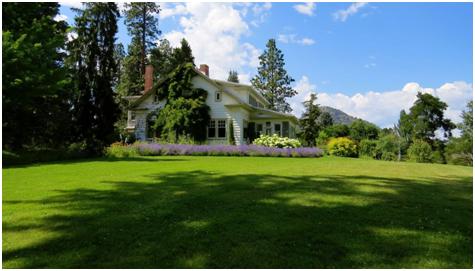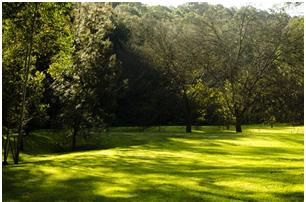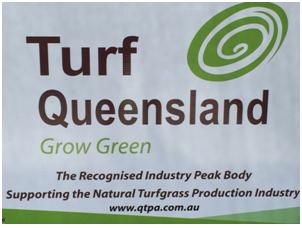Shade Areas and Natural Turfgrass
The following has been adapted from a Sod U (USA) blog for the benefit of natural turfgrass users.
Many people ask the question is my lawn to shady? And how much sunlight do I need to ensure a healthy lawn?
Growing grass in shady conditions is a common challenge for many home owners.
Growing Grass in Shaded Areas
Growing grass in shady conditions is a common challenge for many homeowners. It is common knowledge that grass cannot be grown in total shade (like all plants, grass requires sunlight to photosynthesize), but the questions “how much shade is too much?” or “what is the least amount of sunlight required to grow a healthy lawn?” or “do I need special climatic conditions and soils”? These are asked very frequently.
The short and simple answer to this question is that in order to survive, a lawn using certain shade tolerant varieties will need at least 4 hours of direct sunlight, preferably from 10 am to 2 pm. To thrive, a lawn needs even more sunlight if possible.

Managing Shady Landscapes
The 5 major factors to consider when managing shady landscapes in Queensland and Northern Territory are;
- The kind of shade challenge the lawn is facing?
- What are the soil conditions?
- What are the climatic conditions (how many hours of sunlight/rain/wear)?
- What are the shade tolerant grass options available in the region?
- Fungal disease in shady landscapes.
Different Kinds of Shade & Changing Shade
Not all shade is equal, and not all shade is permanent. Filtered sunlight (partial shade) from a tree is preferable to zero sunlight (complete shade) from a building or other large, permanent structure. Trees may be thinned or removed while buildings cannot be altered to accommodate the needs of a lawn. It is important to consider that as a landscape matures and trees grow larger canopies, previously healthy lawns may decline with diminished sunlight however some of these can be managed. After taking the steps of understanding and managing (if possible) the source of shade, the next factor to consider is the shade tolerant grass options available in your specific region both should be discussed with your Turf Queensland producer there are many different species and varieties available.
Comparative Shade Tolerance of Different Grass Species and Cultivars in Australia
Listed below are grass species recommended in Australia for shade tolerance.
- Buffalo grass
- Zoysia grass
- Kikuyu grass
- Seashore Paspalum
- Couch grass.

The shade tolerant grass species available for use will depend on where you live, climate, soils wear and amount of shade. In warm season areas of Queensland and Northern Territory, Buffalo grass is the most shade tolerant, followed by Zoysia grass (see above).
Comparative Shade Tolerance of Different Cultivars
A cultivar is a specific kind of grass within a species. For example, Palmetto and Sir Walter are Buffalo grasses, but different cultivars. While both are shade tolerant, Palmetto has shown to be one of the most shade tolerant cultivars among all Buffalo grasses.
Within Zoysia grasses, a general guideline to remember is the finer the leaf blade, the more shade tolerant the cultivar. Couch is the least shade tolerant of all grass species, but there are some shade tolerant couch grass cultivars.
Whichever grass you choose, a tip for maintaining shade-tolerant varieties is to mow a bit higher than the recommended mowing height. The extra height will provide a greater surface area for the grass to photosynthesize the reduced sunlight it receives in shady conditions. Always talk with a professional quality Turf Queensland producer for further advice to suit the climate and soils of your area.
A Word About Disease
Any turfgrass grown in wet, shady environments is prone to fungal disease. Shade tolerant grasses often struggle or die from disease pressure, not necessarily from lack of sunlight. When selecting a shade tolerant grass to grow in a shady landscape, be sure to budget for several applications of systemic fungicide per year. Additionally, note that to avoid disease it is best to water less in shaded areas compared to areas that receive full sun.
Nothing Beats Quality Professional Advice
Due to the varying conditions experienced in the Queensland and Northern Territory tropical and subtropical climates, it is recommended you contact your closest Turf Queensland member to obtain their input into the right grasses for your project. www.qtpa.com.au



0 Comments